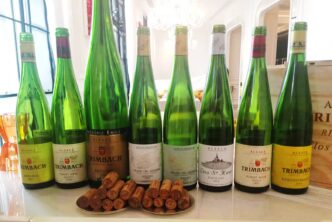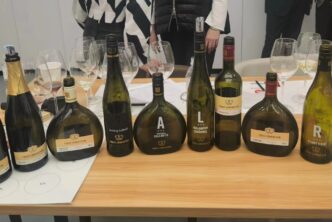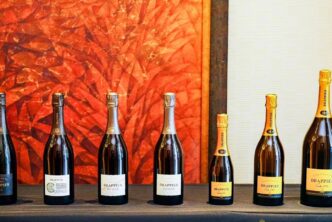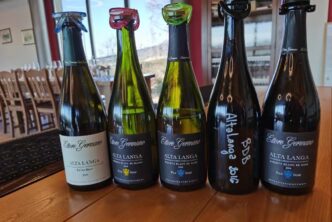I recently had a chance to catch up in Shanghai with Massimo Podda, the Administrative Coordinator and Commercial Director of Santadi, one of Italy’s best wine cooperatives and a leading producer of quality Sardinian wines. I had unfortunately missed out on seeing Massimo and visiting the winery during my August trip to Sardinia this year geared towards visiting wineries, so I was more than happy to have the opportunity to see him and taste the wines in Asia over the course of three different encounters, interviews and tastings.
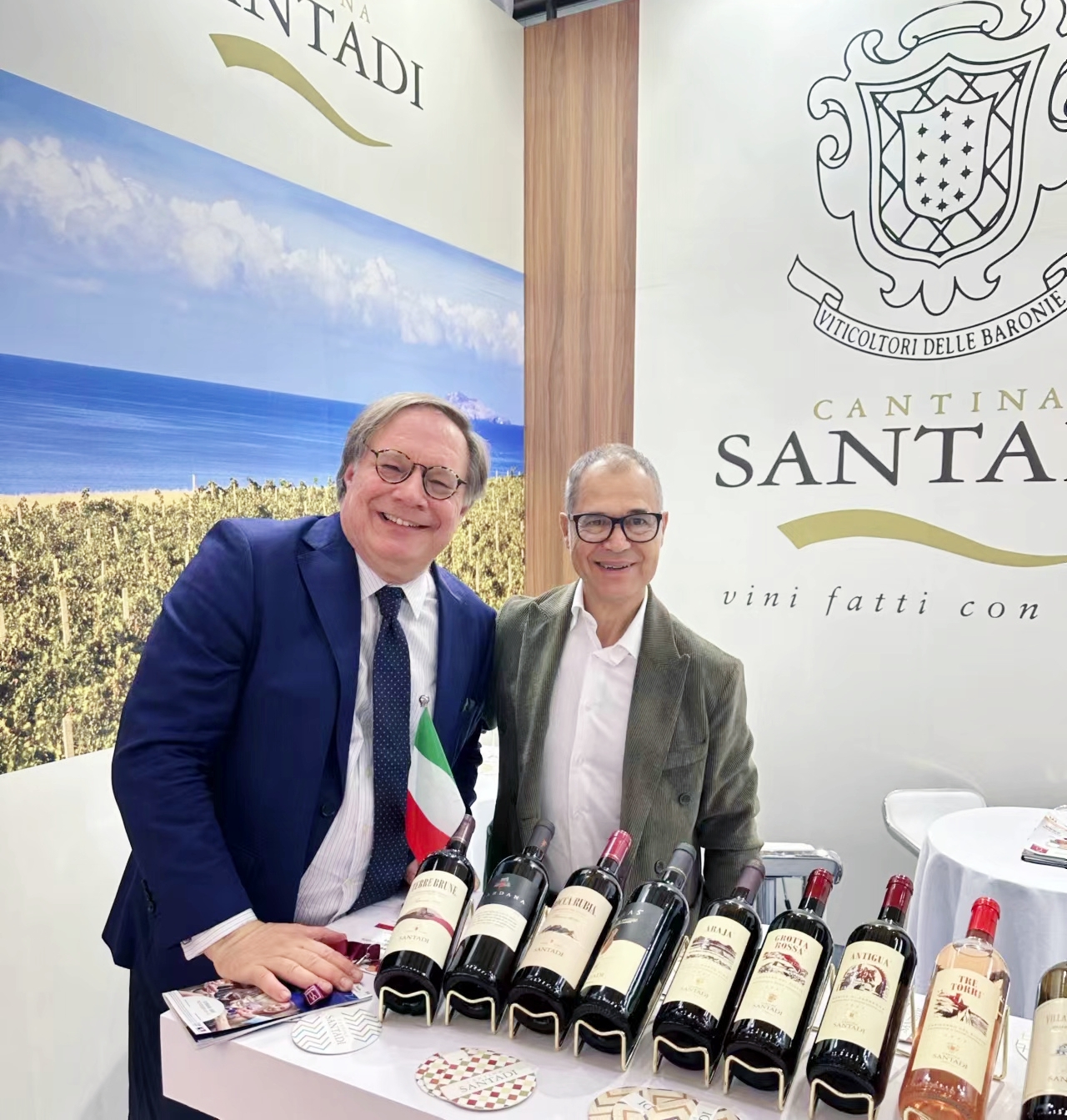
Though most international wine lovers know Barolo, Barbaresco, and Brunello more or less well, the same cannot be said for some of the country’s best wineries in less well-travelled regions. While everybody who likes Italian wine will inevitably, sooner or later, flock to the Langhe or Tuscany, few make the trip out to visit wineries in Puglia, Sicily or Sardinia, for example. And so, it is likely that very few of my readers have ever visited Santadi; and yet the winery is a big deal in Italian drinking circles. By volume, Santadi is the island’s fifth biggest wine producer; but more importantly, with Santadi it is also a rare case of quantity that goes hand in hand with quality.
Located on the beautiful island of Sardinia (at 24,090 square kilometers large, Sardinia is the second biggest island of the Mediterranean Sea and the forty-eight largest island in the world), Santadi is universally recognized as Italy’s best producer of Carignano wines. In fact, it’s two flagship wines are the more traditional Rocca Rubia Riserva Carignano del Sulcis and the more internationally crafted Terre Brune Carignano del Sulcis. Both rank amongst Italy’s fifty or so best red wines each and every year. One or both never go missing in any serious wine writer’s “Best Italian Wines of the Year” list; and on that note, I invite you to peruse my own annual such classification that I have been publishing regularly since 2005; out on the TerroirSense Wine Review magazine website next Friday, December 15, you will find that this year too one of Santadi’s wines is included amongst Italy’s best wines of the year.
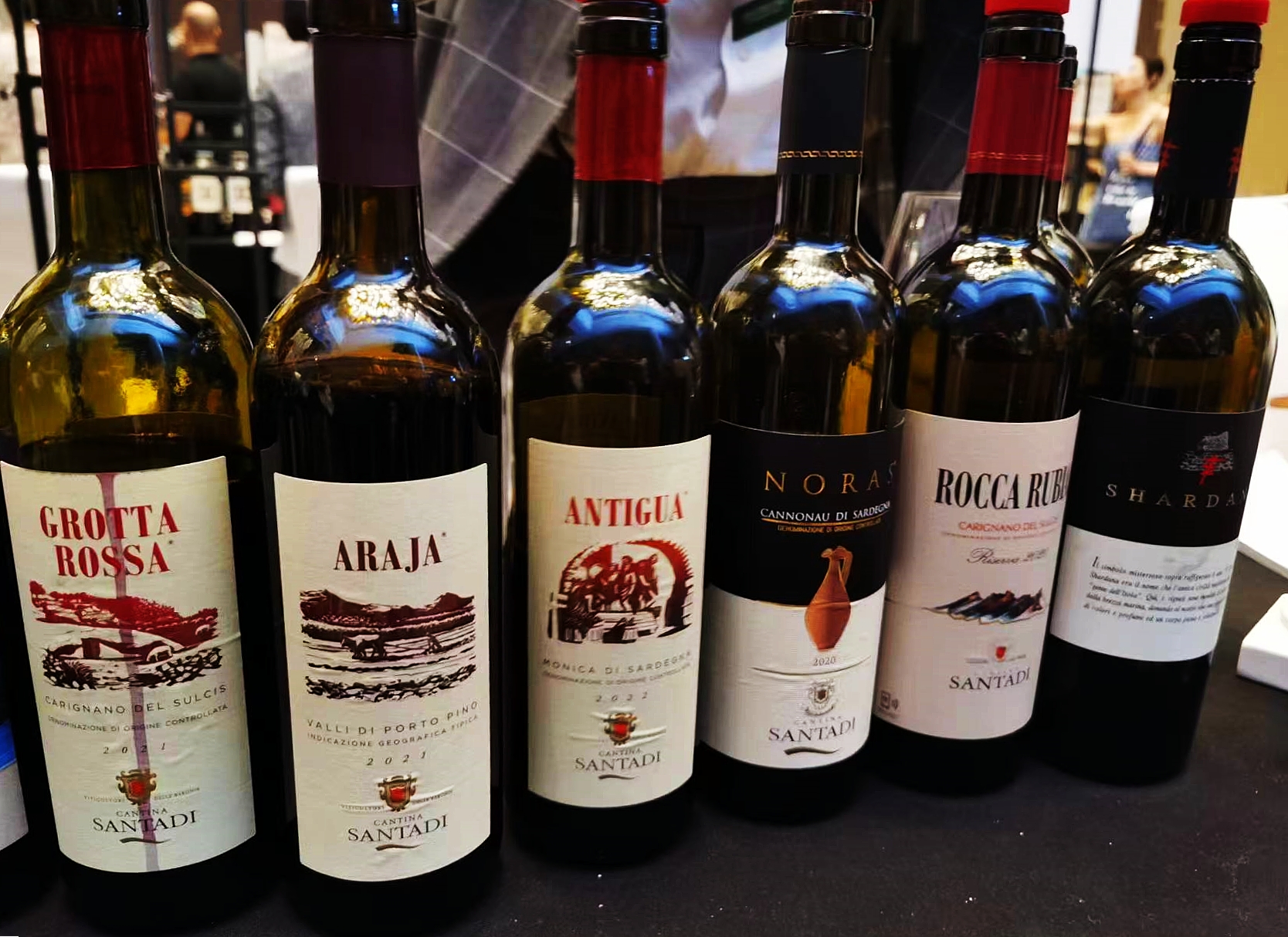
Podda has been at Santadi for three years now (since September 2020), but had already been working in Sardinia for two years before, when he was at Agripunica (from November 2016 to August 2020). Agripunica is a high-quality wine estate that many wine lovers have heard of (despite its Sardinian location) if for no other reason because it is partly owned by the Incisa della Rocchetta family, also owners of Tuscany’s world-famous Tenuta San Guido (the producer of the almost mythical Sassicaia wine). In fact, Santadi is a co-owner of Agripunica (founded in 2002); a bond that was made that much stronger because Santadi’s President, Antonello Pilloni, personally owns 5% of Agripunica. Pilloni is an historical figure in Sardinia’s wine history, and one that deserves plenty of credit for all he has done for the island and its wines over the years. Not only has he been president of Santadi uninterruptedly since 1976, he is also directly responsible for having turned Santadi from its initial reality (that of a large-volume producer of good but relatively unexciting wines) to the world-class outfit it is today. How he did so is a lesson in what a mix of passion, dedication, clairvoyance and talent can bring to the fore.
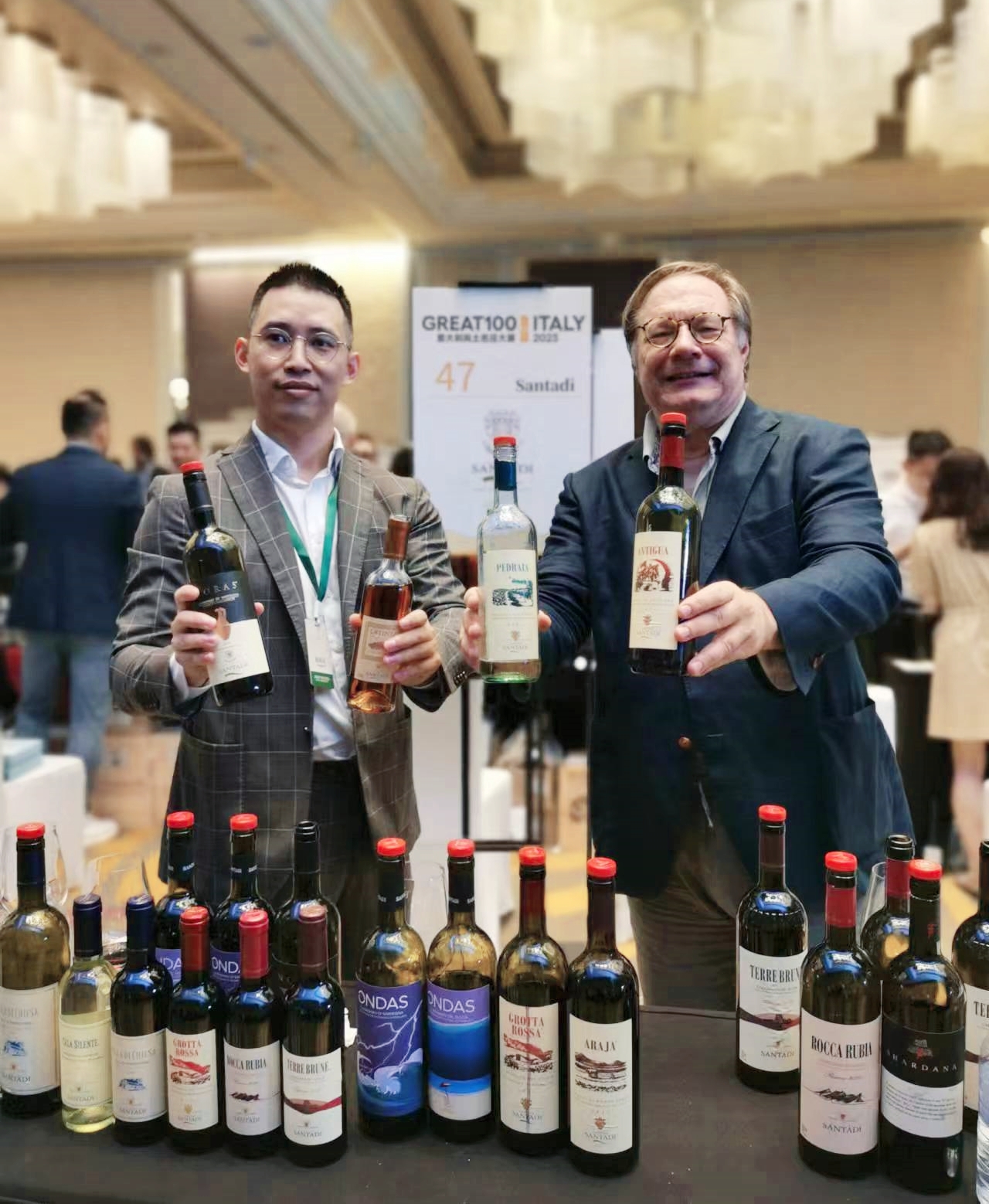
Santadi’s “genes” are not such that might have led wine lovers and collectors to expect that collectible, world-class wines would one day be made there. For Santadi, founded in 1960 by twenty initial brave souls (the founding members), is a wine cooperative where members bring their grapes to be mass-vinified with those of all the other members. Clearly, such outfits rarely preach quality over quantity, and so it was at Santadi too, at least initially. Santadi’s real turning point came in 1976, thanks to Antonello Pilloni becoming its new President; undoubtedly a visionary, he thought the company could do more, and believed that the area’s local Carignano was the trump card they should all bet on, but this without neglecting the other local native grapes. He had the stroke of genius of hiring none other than Giacomo Tachis as consultant winemaker: Tachis was one of the men who contributed to the greatness of Sassicaia: taking such a step might not seem so out of the ordinary today, but it certainly was just that back in the 1980s, and by an island cooperative no less. Suffice it to say that Santadi’s standing in the world of Italian wine (and not just Italian wine) rose quickly after that, with numerous excellent and award-winning wines being made over the years.
Today, the Santadi winery boasts about 200 members who farm over 650 hectares of land; annual wine production hovers around 1,700,000 bottles/year. But despite making such large volumes of wine, Santadi is universally viewed as a producer of very good to top-quality wines. The coop is rightly famous for having shined the spotlight on the exceptionally good Carignano del Sulcis wines (the denomination refers to the Sulcis area, located at the extreme southwestern tip of Sardinia, is the terroir where not just Italy’s, but some of the world’s best Carignano wines are made). However, Santadi is also making superb wines with local varieties like Nuragus, Nasco and Monica that while costing only a fraction of many of Italy’s, Spain’s or France’s better-known wines, also deliver just as much if not even more drinking pleasure. Truth is that, if and when you are looking for a light to medium-bodied easygoing red wine, Sardinia’s Monica wines, and Santadi’s in particular, are usually a much better bet than any Beaujolais, Villages Pinot Noir, entry-level Rioja, Valpolicella or Chianti Classico you can think of. But of course nobody tells you that, because there just so many varied interest behind the promotion and sales of wines made with Cabernet Sauvignon, Chardonnay, Sangiovese, Vermentino and others. But you are doing your wine-loving self a disservice unless you at least give wines made with Monica, Nasco, Nuragus and other similar little-known local Sardinian grapes a try.
That Santadi is able to pack such quality in each and every one of its bottles (most of the time: admittedly, they too will have off-vintages, just like everybody else) is that much more impressive given those 650 hectares of vineyards to look after I mentioned earlier. Any way you choose to slice it, 650 hectares is a huge amount of land: but do you realize just how large? To help put things in perspective and have you understand just how large an area of vineyards I am talking/writing about, just keep in mind that the entire surface of an NFL football field is “only” 57,600 square feet, the equivalent of 0.534 hectares (or 1.23 acres). In other words, upkeeping Santadi’s vineyards over 650 hectares is like having to take care of the grass over 1,217 NFL football fields. That’s how large an area. And I trust we can all agree on the fact that taking care of vines and grapes is far harder than doing the same with tracts of land that are only growing grass. With that sort of numbers, and given that most cooperatives are admittedly not quality leaders in their respective wine regions (Produttori di Barbaresco in Piedmont and most of Alto Adige’s cooperatives are noteworthy exceptions to this general rule), you can hardly blame wine enthusiasts and critics for having looked at Santadi in the past as a source of cheap and cheerful wines, but nothing more.
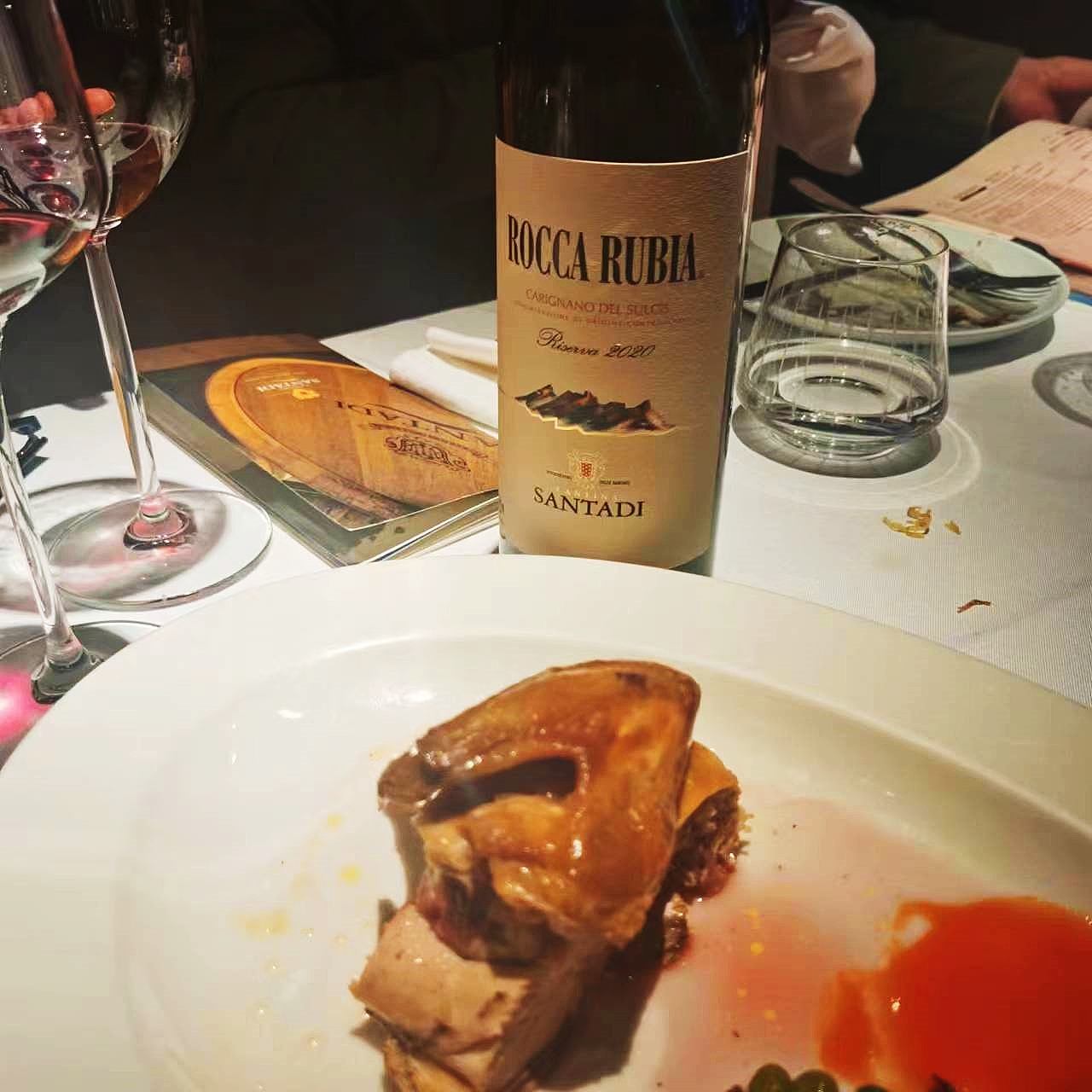
The numbers and why it is that different Carignano wines taste different
Of Santadi’s 650 hectares, 62% are planted to Carignan, 15% to Vermentino, 5% to Nuragus, 5% to Monica, and 5% to Cannonau; Syrah, Nasco, Chardonnay, and Sangiovese represent 2% each of the remaining plantings. Those numbers underscore just how important Carignano is in Santadi’s part of Sardinia, given that it isn’t even one of the top three wine grapes grown in Sardinia (there are more plantings of Vermentino, Cannonau and Nuragus in Sardinia than there are of Carignano). Very importantly, of Santadi’s roughly 400 hectares devoted to Carignano (that as mentioned is the variety that gives Santadi’s two flagship red wines), 150 hectares are of extremely old, ungrafted, vines planted on very sandy soil. About 10% of Santadi’s vines range between 60-100 years of age; the average age of the vines sits between 15-20 years old. This different vine age plays a role in generating the organoleptic differences that tasters will find between the Rocca Rubia and the Terre Brune Carignano wines: for example, the latter is made with the cooperative’s oldest vines, almost all of which are ungrafted, and planted on sandy soil. Other differences in colour, aroma and flavour between these two great wines derive not just from vine age and soil type but also from other factors. A slightly different grape blend, for example: though it might not seem like much, the 5% of Bovale Sardo included in the Terre Brune wine (Rocca Rubia is instead 100% Carignano) adds a recognizably different nuance to the wine. Furthermore, it is important to understand and to realize that given the difference in vine age between the Carignano vineyards used to make Santadi’s two benchmark Carignano wines, it is unlikely the Carignano grapes used to make the two wines are of exactly the same Carignano biotype, which greatly and further contributes to different colour, aroma and taste sensory profiles of wines. Another terroir difference between the two wines is the greater proximity to the sea of Terre Brune’s vineyards; clearly, this leads to different microclimates in its vineyards compared to those of Rocca Rubia. And that also plays an important role in fashioning a wine that is ultimately quite different from Terre Brune’s.
The wines in this tasting report
All the wines in this report were tasted by me in Shanghai, where I work and live. Most of the wines I tasted repeatedly over a short time span of two weeks in three separate occasions, including the GREAT100 Terroir Wineries of Italy show held annually the first weekend in Shanghai (the 2024 edition will be on July 7 and 8); at a second wine show held in another large Chinese city; and then again at a wine and food pairing dinner in the presence of Massimo Podda and Silvio Shen, Santadi Asia Ambassador, a very passionate and talented young Chinese National who speaks Italian remarkably well (he studied in Bologna). Salute!
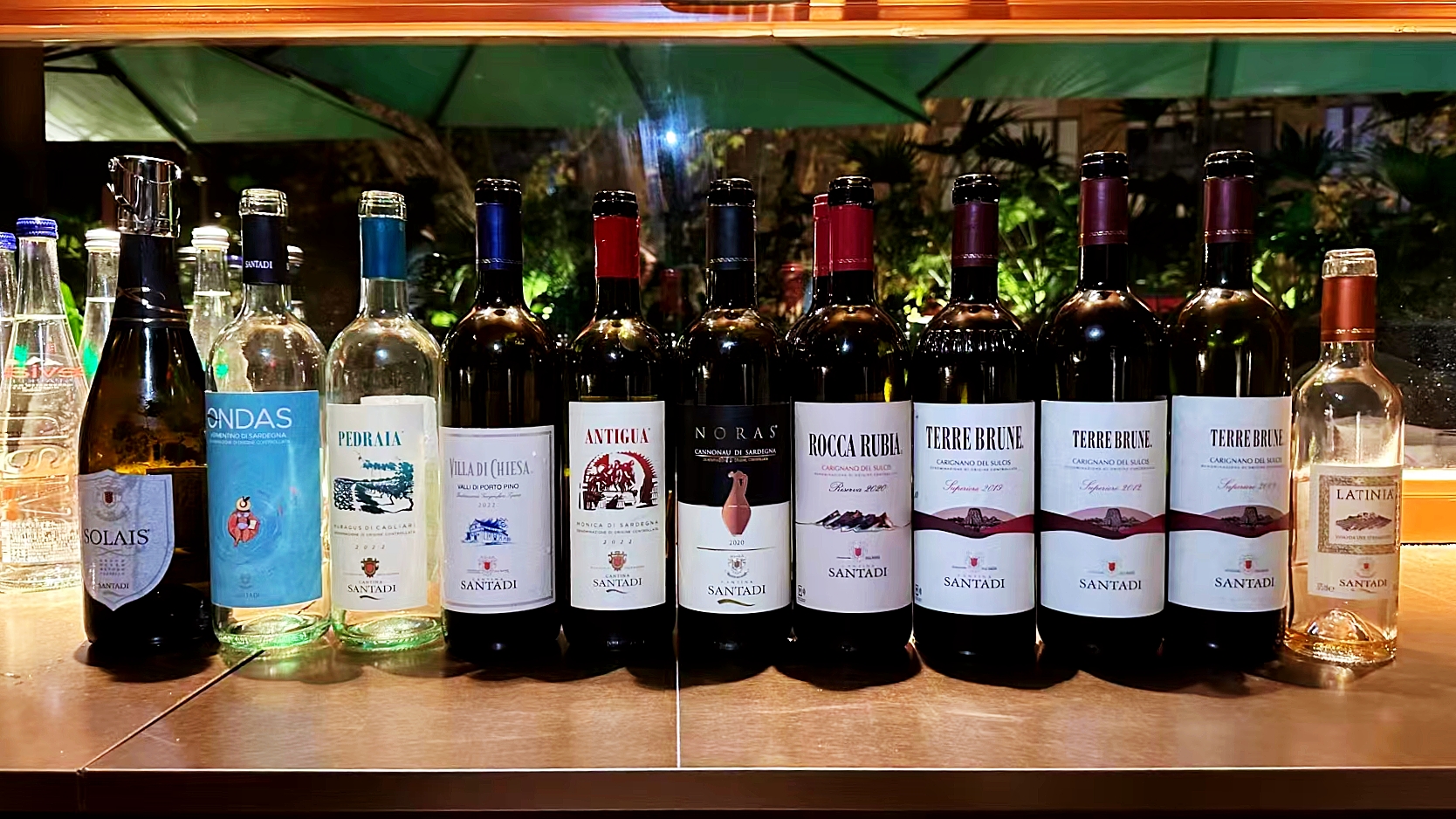
Santadi NV Metodo Classico Grand Cuvée Brut Solais 90
Light straw yellow with a steady, thin, stream of small bubbles. Nicely scented, with hints of diesel fuel- and mineral-laced aromas of apple, nectarine, orange, lemon zest, honeysuckle and green almond. Strikes me as deeper and more balanced than last year’s bottling, boasting sneakily concentrated flavours of ripe citrus and orchard fruit complicated by herbs and spices. The finish is nicely textured, with a gentle chewiness, and long, repeating diesel fuel and citrus nuances. Very easygoing and not especially complex, but there’s still lots more going on here than meets the eye (er, the palate). Only apparently simple, I have always thought Solais to be an underrated wine. 100% Vermentino that spent 36 months on the lees and sees no oak in the vinification or aging process thereby enhancing the wine’s intrinsic freshness and salinity. Drinking window: 2023-2025.
Santadi 2022 Vermentino di Sardegna Ondas 89
Pale straw yellow with some gold. Grapefruit, lime and apricot aromas are lifted by hints of flowers, sage and thyme . Juicy and easygoing in the mouth, with soft lime and pink grapefruit flavours to go along with a lively texture and good length. Nicely saline at the back, this approachable white wine makes an excellent aperitif and every day sipper, porch \or poolside. Made with Vermentino grapes grown in the lower Sulcis area on mostly sandy-clay soil. No oak. Drinking window: 2023-2025.
Santadi 2022 Vermentino di Sardegna Cala Silente 91
Bright pale straw-gold. Yellow melon and nectarine on the slightly minty nose. Then still more soft melon and orchard fruit flavours are given a refreshingly bitter edge by pear skin and herb elements. The classically dry finish is nicely lifted and hints at balsamic oils. Will prove very flexible with various fish and vegetable dishes. Vinified in stainless steel and aged a few months in cement vats prior to going into bottle. Drinking window: 2023-2026.
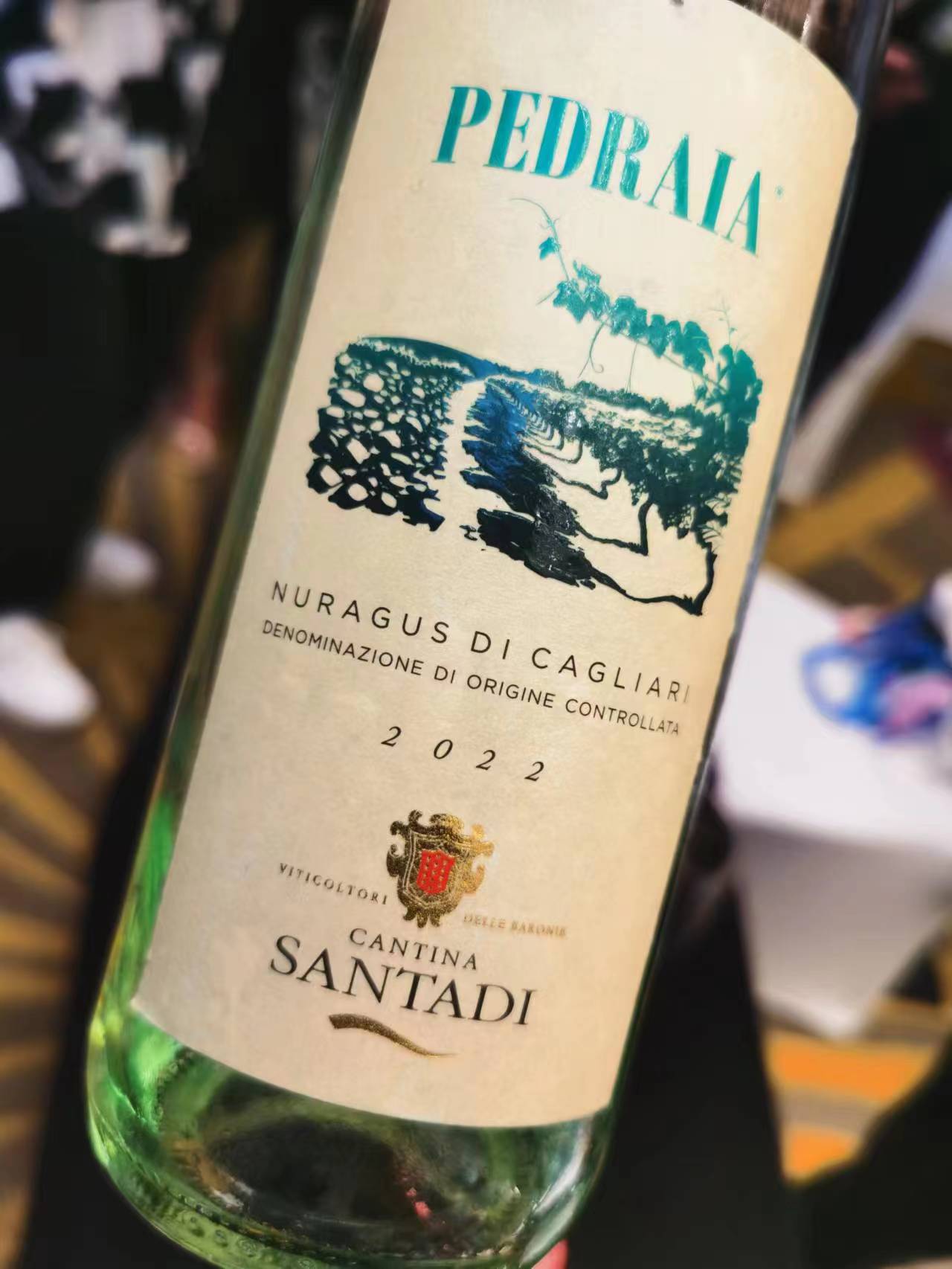
Santadi 2022 Nuragus di Cagliari Pedraia 93
Bright pale yellow. Intriguing scents of dried tangerine peel, yellow apple, pear, pungent herbs and anise. Fresh and easygoing on entry, then showcases impressive depth and rather powerful citrus and orchard fruit flavours complemented by green herb and dried flower nuances. Hints of grilled nuts and mint linger nicely on the vibrant yet sappy, gently brisk finish. Always one of the last grapes to be harvested, Nuragus is capable of giving powerful very complex wines but it really does need to be ripe, or one runs the risk of making a green, overly-herbaceous wine. This is not the case with Santadi’s beautiful Pedraia wine, aged in stainless steel and cement tanks prior to going into bottle. I quite like this. Drinking window: 2023-2029.
Santadi 2022 Valli di Porto Pino Villa di Chiesa 91
Medium golden-straw yellow. Pear, pineapple and yellow melon aromas and flavours are complemented by hints of butter, banana, roasted almonds and a strong leesy nuance. Juicy on entry, then thicker and more concentrated in the middle, but with a saline note that helps keeps this butter, banana-rich wine fresh and lively. Finishes round but lifted, conveying an impression of structure and solidity. A blend of at least 40% Chardonnay (and boy can you tell) and other local varieties vinified and aged in oak barriques, this is oily and mouthcoating but nonetheless fresh and light on its feet. Well done. Drinking window: 2024-2027.
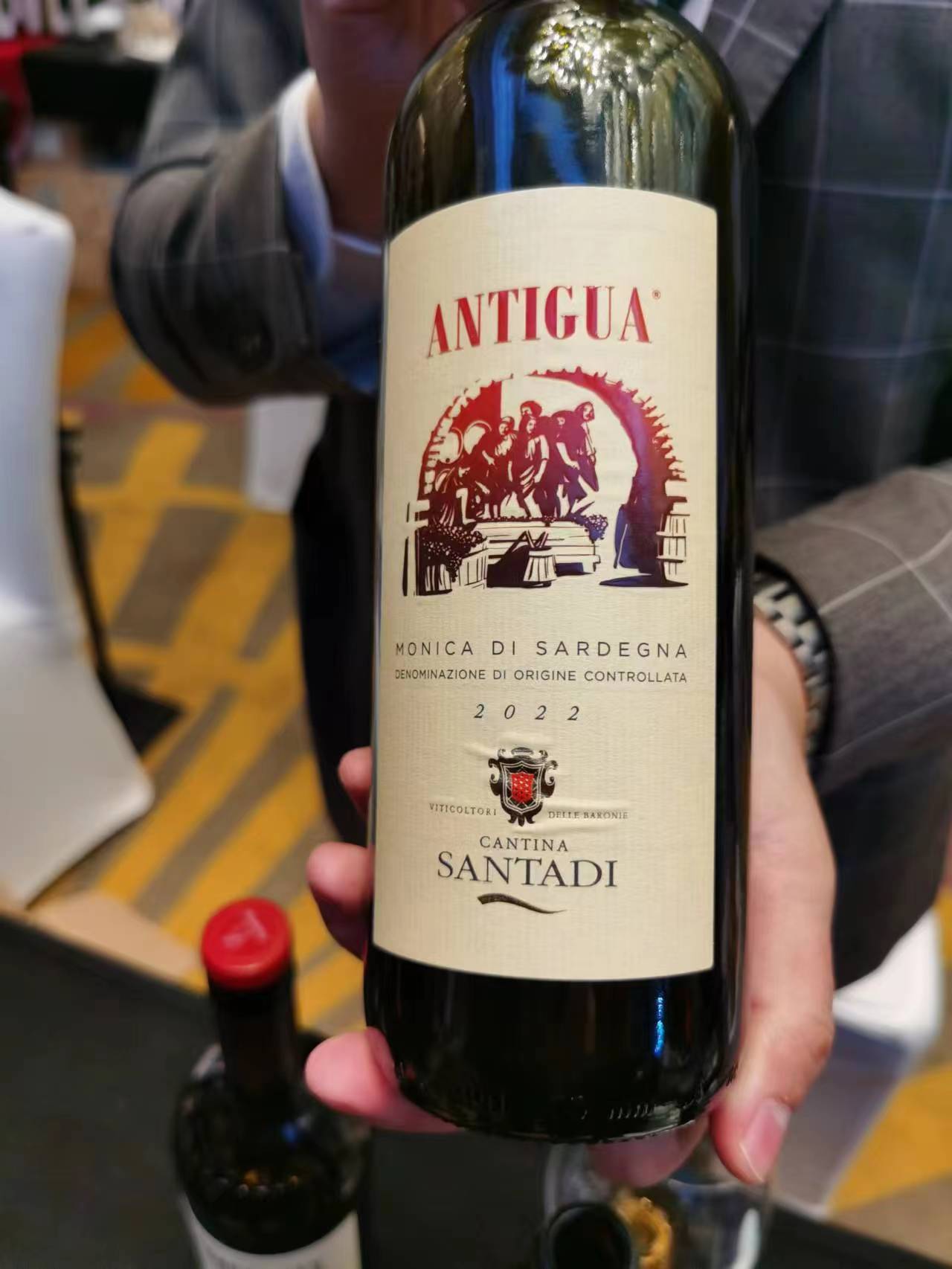
Santadi 2022 Monica di Sardegna Antigua 93
Bright red colour. Very elegant, unabashedly in your face red fruit aromas of red cherry, and raspberry, lifted by a bright violet top-note, and complicated by hints of sweet spices, minerals and herbs. Lively and very fresh in the mouth, with a crisp, pure, medium-bodied mouthfeel and utterly delicious flavours of red cherry, raspberry nectar, cinnamon and candied violet. The aftertaste is vibrant, long and delicious. Knockout medium-bodied wine that puts many Beaujolais, Chianti and light Pinot Noir wines to shame. It will prove very food-friendly, easygoing and approachable. Outstanding stuff: you will find that putting the glass back down is something you’ll find yourself doing only when needing another refill, because otherwise you’ll find this Monica is so good she won’t want her leaving your lips anytime soon. Drinking window: 2023-2028.
Santadi 2021 Carignano del Sulcis Grotta Rossa 91
Bright ruby-red. Crystallized red currant, strawberry, licorice and potpourri on the fruity, upfront nose. At once supple and tangy, with lively flavours of ripe red cherry, red licorice, herbs and sweet spices. Very fresh and juicy, but with good breadth and creaminess thanks to a full malo, this also boasts very fine tannins. I find this graceful red wine really expands nicely on the back half. Well done. Drinking window: 2023-2028.
Santadi 2020 Cannonau di Sardegna Noras 92
Good full ruby-red. Vibrant aromas of ripe red cherry, licorice and violet; quite expressive and superripe, but not over the top. Then dense, creamy and very primary, with powerful yet smooth flavors of superripe red cherry, smoke, licorice, chocolate and raisins spreading out to saturate the palate. Spends six months in once used oak barrels prior to going into bottle. There’s something vaguely air-dried about this, and it really is irresistible. Drinking window: 2023-2026.
Santadi 2020 Carignano del Sulcis Riserva Rocca Rubia 95
Good deep red. Strawberry, tobacco, myrtle, sea breeze, smoke and underbrush on the nose. Nicely concentrated and vibrant, with a somewhat cool, crisp quality to the flavors of red fruits, herbs, licorice and orange peel. Builds nicely on the back end, with the tannins nicely buffered by mid-palate material and its flavours complicated by hints of powdered rocks. Aged ten to twelve months in new and once-used oak casks. This wine has long been the best traditionally-made Carignano wine of Sardinia. Drinking window: 2026-2034.
Santadi 2019 Carignano del Sulcis Superiore Terre Brune 93+
Now this is a knockout. Good fully saturated ruby-red. Superripe, complex, slightly roasted and very sweetly spicy nose combines red cherry, blackberry, dark chocolate, smoked meat, maple syrup, coffee, tobacco and licorice. Then very concentrated but lively in the mouth, boasting compelling sweetness and depth, but with lively harmonious acidity keeping its opulence in check. Closes long with fine-grained tannins, but very mouthcoating: I found that this needed at least four hours in a decanter to resolve some of its oakiness to allow it to show all it has to offer. With that appropriate and frankly much-needed amount of aeration, Terre Brune’s inherent sweetness of fruit emerged to a much greater degree, also becoming more supple and enjoyable. Terre Brune is aged about 16-18 months in new oak and I honestly wonder if that isn’t just a little too much? Perhaps trying only 50% new wood might be a better solution? Just saying, because this is obviously a potentially great, great wine, but I find it somewhat stunted by such a strong oaky presence. Drinking window: 2026-2035.
Santadi 2012 Carignano del Sulcis Superiore Terre Brune 89
Full red-ruby. High-toned aromas of red and blackcurrant, spicecake, mocha and licorice, with hints of leather, underbrush and earth. Savoury and dense, with leathery and forest floor elements currently dominating the delicate fruit flavours. Finishes with good energy and persistence and slightly dry tannins. Santadi’s 2012 Terre brune is certainly a big, impressive mouthcoating wine, but I found this to be too savoury, gamey and leathery for my taste. Drinking window: 2023-2027.
Santadi 2009 Carignano del Sulcis Superiore Terre Brune 96
Deep ruby-red with a pale rim. Notes of ripe red and black cherry, dark plum, balsamic herbs and a pungent rocky minerality are lifted by bright violet nuances on the nose. Big and rich but with noteworthy elegance of flavour, with an enticing sweetness and very good balance to the black cherry, plum, spice and mineral flavours despite its outrageous ripeness and size. At once energetic and brimming with personality, the 2009 Terre Brune coats the palate on the rising, suave and very long finish, but strikes as always having been and being less marked by oak than some more recent vintages of Terre Brune. Beautiful stuff. Drinking window: 2023-2034.
Santadi 2017 Vino da Uve Stramature Latinia 94
Bright gold with an orange tinge. Inviting aromas of orange oil, peach nectar, crystallized pineapple, tarte tatin, honey and white flowers are complicated by cloves and spicy vanillin oak. Smooth and very precise in the mouth, there’s lovely purity of fruit here not to mention nicely integrated acidity that provides noteworthy lift and focus. Closes with lingering sweet peach and spice flavours. 100% Nasco that is late-harvested in the vineyards from about the end of September to the end of October. Drinking window: 2023-2030.

 中文
中文
